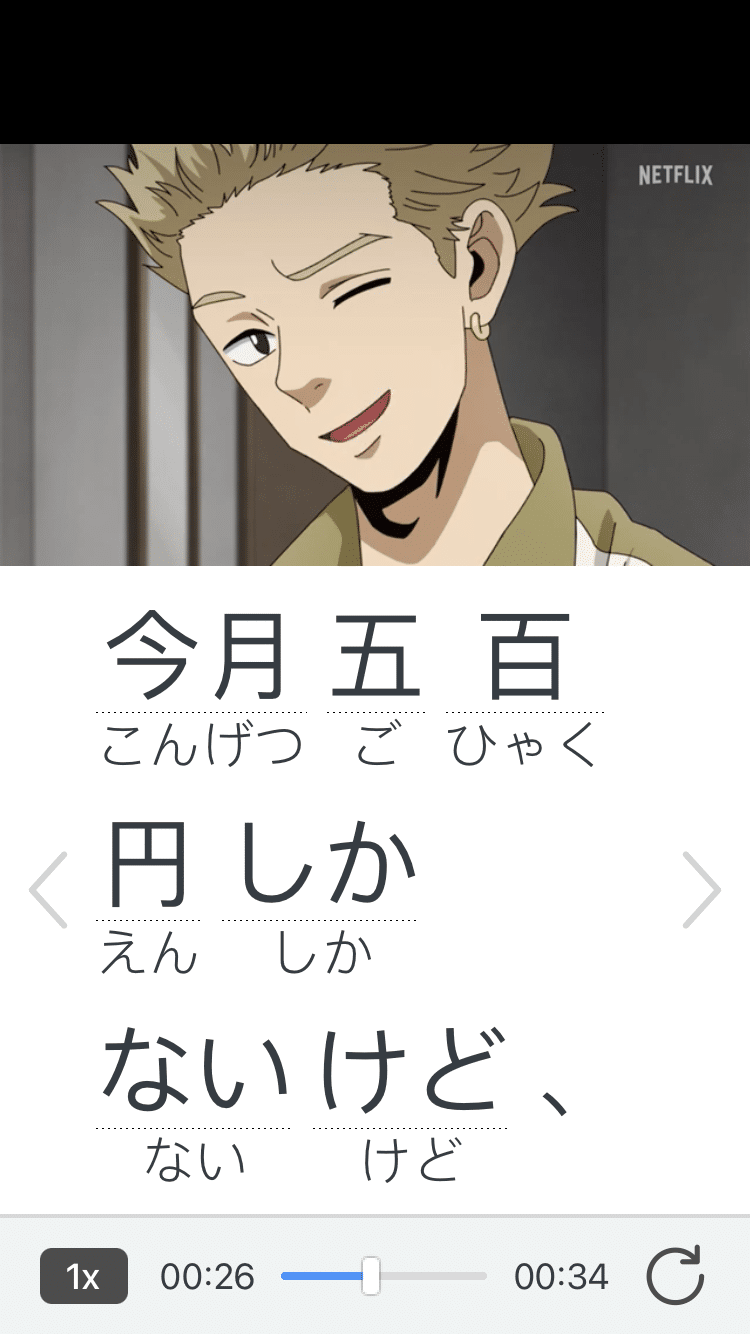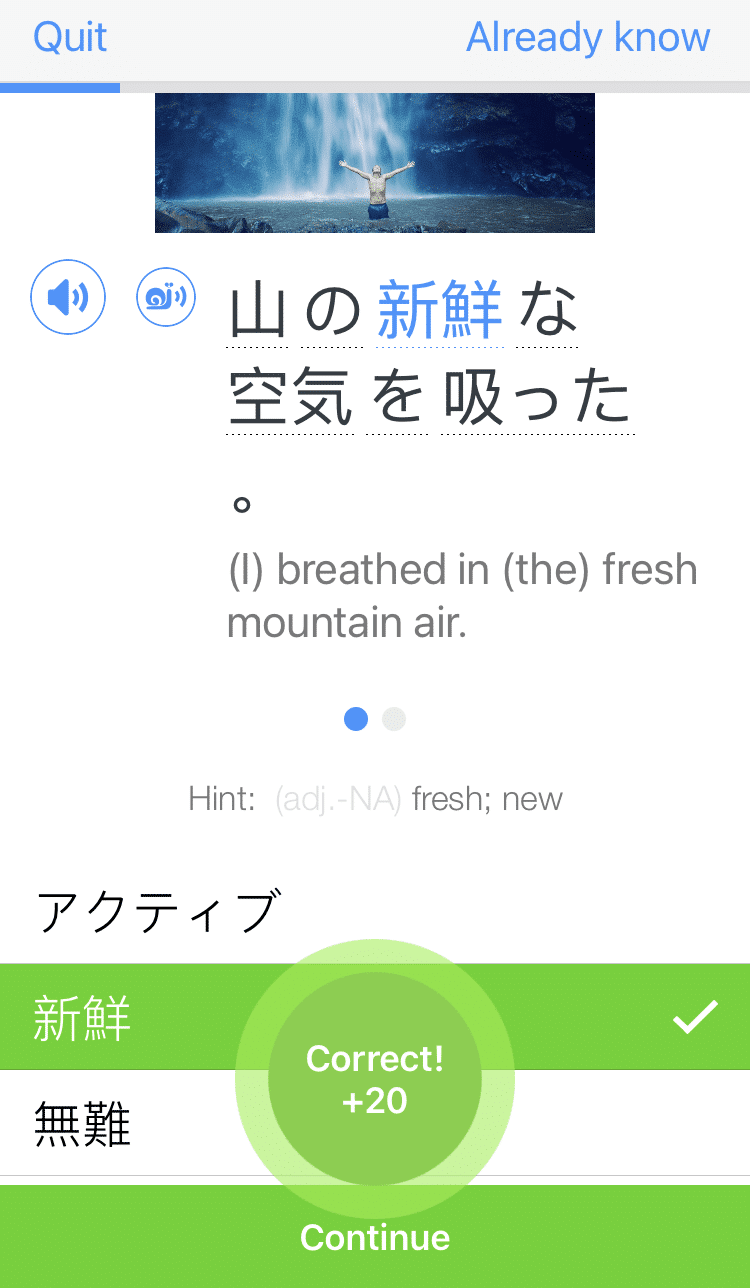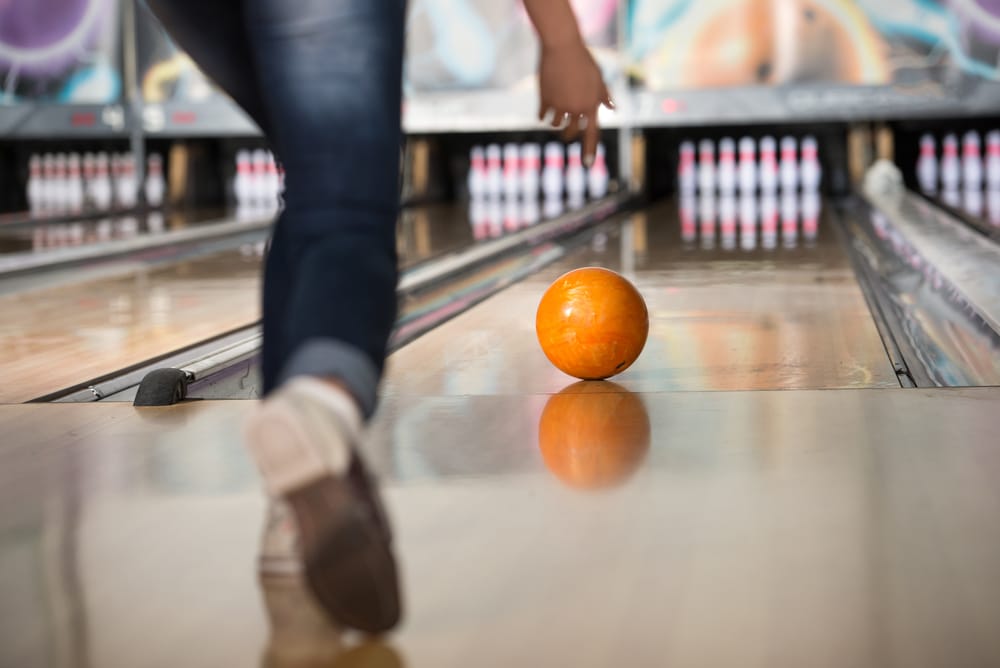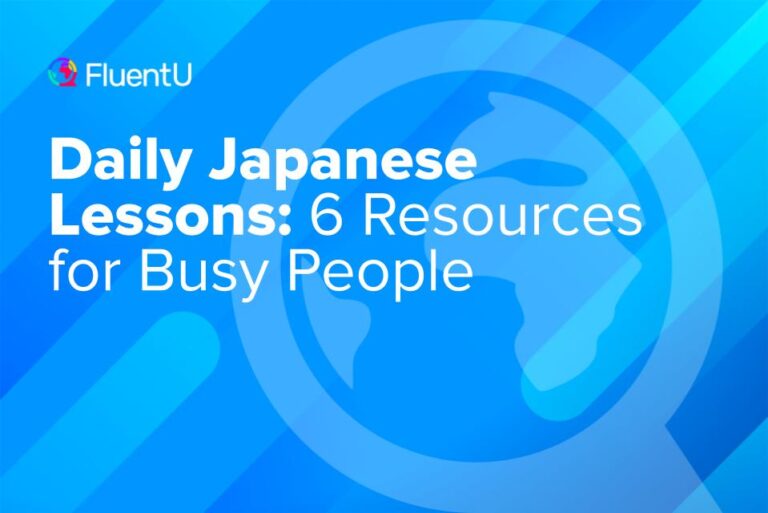Contents
- 1. ドキドキ (どきどき) — Doki Doki
- 2. ギリギリ (ぎりぎり) — Giri Giri
- 3. バタバタ (ばたばた) — Bata Bata
- 4. ニコニコ (にこにこ) — Niko Niko
- 5. キラキラ (きらきら) — Kira Kira
- 6. フワフワ (ふわふわ) — Fuwa Fuwa
- 7. ボロボロ (ぼろぼろ) — Boro Boro
- 8. ベトベト (べとべと) — Beto Beto
- 9. ピリピリ (ぴりぴり) — Piri Piri
- 10. コロコロ (ころころ) — Koro Koro
- Why Use Gitaigo?
- How to Use and Practice Gitaigo
- And One More Thing...
10 Gitaigo You Need to Add to Your Japanese Vocabulary

Ever wondered what your Japanese friend meant when they said that 線香花火 (せんこうはなび) — handheld fireworks were kira kira? That expression is an example of gitaigo or 擬態語 (ぎたいご) — onomatopoeic expressions that are uniquely Japanese.
Unlike general Japanese onomatopoeia which conveys sounds, 擬態語 defines some things that we can all relate to, such as actions, states and human emotions. Let’s cover a handful of these expressions, and see just how cool they can be.
Download: This blog post is available as a convenient and portable PDF that you can take anywhere. Click here to get a copy. (Download)
1. ドキドキ (どきどき) — Doki Doki
Form to use: ドキドキする (どきどきする)
Meet ドキドキ, a.k.a. my all-time favorite. This expression tries to capture the sound of your heart pulsing, beating, pounding or throbbing.
Use this to describe anything you’re feeling in your heart—from the slightest excitement to the heaviest palpitations caused by love, fear, joy or surprise (i.e., anything that makes your heart jump).
Got butterflies in your stomach after you finally managed to arrange a date by texting in Japanese? ドキドキしてるね。 (どきどきしてるね。) — How exciting, right?
Is your first Japanese job interview (and half an hour of honorifics) coming right up? もちろん、ドキドキしています。 (もちろん、どきどきしています。) — Of course, you’re stressed out.
Going back home for the holidays after a year abroad (and can’t wait for your Mom’s cooking)? それはみんなドキドキしてるんじゃない? (それはみんなどきどきしてるんじゃない?) — Wouldn’t anybody be excited?
Heard somebody walking behind you at night in a dark street? ドキドキしたでしょう。 (どきどきしたでしょう。) — It must have been scary.
2. ギリギリ (ぎりぎり) — Giri Giri
Forms to use:
ギリギリだ (ぎりぎり だ)
ギリギリです (ぎりぎりです)
This one belongs to a different category and is used to refer to something that happens within the shortest limit possible.
You met the deadline with only 5 minutes left? ギリギリだったよね。 (ぎりぎりだったよね。) — That was close!
Someone parked a car beside yours so you can’t open the door without bumping into them? それはギリギリでした。 (それはぎりぎりでした。) — They made it by a hair.
You can barely afford this trip with your friends? 頑張ったら、ギリギリで行けるかな。 (がんばったら、ぎりぎりで いけるかな。) If you work hard, maybe you can make just enough so you can go.
Space, time, emotion—everything can be ギリギリ。
3. バタバタ (ばたばた) — Bata Bata

Form to use: バタバタする (ばたばたする)
バタバタ can be used as a regular onomatopoeia to describe things like the sound of a flag flapping in the wind or heavy footsteps. It can also refer to a state of inner agitation.
Are you in a rush to finish something and multitasking like crazy? 間違いなく、バタバタしているね。 (まちがいなく、ばたばた しているね。) — No doubt, you’re running around.
Feeling impatient and overwhelmed by all that’s left to accomplish to make your wedding day perfect? 確かに、バタバタしそうだぞ。 (たしかに、ばたばた しそうだぞ。) — You must be so busy and bothered.
4. ニコニコ (にこにこ) — Niko Niko
Form to use: ニコニコする (にこにこする)
ニコニコ refers to a genuine, innocent and truly happy smile or laugh. Note that it doesn’t include grinning, sneering or anything negative.
Smiling? 彼女はニコニコしている。 (かのじょはにこにこしている。) — She is smiling.
5. キラキラ (きらきら) — Kira Kira
Forms to use:
キラキラする (きらきら する)
キラキラと +Verb (きらきら と+Verb)
In the kingdom of かわいい (cute) and girly, you ought to remember キラキラ。
Use it for anything that’s twinkling, glistening or glittering—like sparkly colors, shiny beads, bright sequins and metallic anything.
彼女のパーティーワンピースがすごくキラキラしているよね。 (かのじょの ぱーてぃーわんぴーすが すごく きらきら しているよね。) — Isn’t her dress incredibly sparkly?
夜中の星はキラキラ輝いています。 (よなかの ほしは きらきら かがやいています。) — The stars are twinkling in the midnight sky.
クリスマスの飾りはキラキラ光っている。 (くりすますの かざりは きらきら ひかっている。) — Christmas decorations are glistening.
6. フワフワ (ふわふわ) — Fuwa Fuwa
Forms to use:
フワフワする (ふわふわする)
フワフワと (ふわふわと)
フワフワだ (ふわふわだ)
Okay, I’m gonna cheat a little and add another expression I love which is somewhat close to フワフワ: モコモコ (もこもこ)。 フワフワ means either fluffy and furry or floating.
フワフワした雲 (ふわふわした くも) — Fluffy clouds
この猫、フワフワだね。 (このねこ、ふわふわ だね。) — This cat is so furry.
In both of the above sentences, the phrase implies a smooth sensation. Now, let’s see how it’s used to mean “floating”:
風船はフワフワと飛んでいった。 (ふうせんは ふわふわと とんでいった。) — The balloon went away floating.
It could also be used to express being lighthearted and incapable of focusing—that is, your mind is “floating” somewhere else.
次の休みを考えたら、心がフワフワして、仕事に集中できなくなってきた。 (つぎの やすみをかんがえたら、こころが ふわふわ して、しごとに しゅうちゅうできなくなってきた。) I was so lighthearted when thinking of my next holidays that I couldn’t concentrate on my work.
As for モコモコ, it means furry, but furrier than フワフワ。Fleece could be フワフワ, but not モコモコ。
7. ボロボロ (ぼろぼろ) — Boro Boro
Forms to use:
ボロボロだ (ぼろぼろだ)
ボロボロです (ぼろぼろです)
ボロボロ is for anything broken, tattered, crumbled, ragged or otherwise heavily damaged—like your favorite shoes that you really ought to retire but can’t because of sentimental reasons.
8. ベトベト (べとべと) — Beto Beto
Forms to use:
ベトベトする (べとべと する)
ベトベトになる (べとべとになる)
ベトベト means sticky. Could it be easier than that?
9. ピリピリ (ぴりぴり) — Piri Piri
ピリピリis for stinging or tingling sensations caused by spicy food and/or a burning mouth.
It has to be a diffused sensation, though. If something prickles (like needles or pins), then it’s チクチク (ちくちく).
10. コロコロ (ころころ) — Koro Koro
Form to use: コロコロと (ころころと)
コロコロ is mostly used as an adverb to describe a rolling motion. It’s also what those extremely useful sticky lint rollers are called in Japanese. Anything rolling on a surface can qualify as コロコロup until it reaches a certain size. For example, cars don’t go コロコロ in an accident.
Did you drop an apple that rolled all across your kitchen floor? コロコロと転がっていった。 (ころころと ころがっていった。) — It rolled away.
Is the snow rolling down and shaping into a snowball? コロコロと丸くなって転がってきたよ。 (ころころと まるくなって ころがってきたよ。) — It came down rolling into a ball.
Why Use Gitaigo?
Whenever you express a feeling or describe an action, chances are there’s a 擬態語 corresponding to the message you’re trying to convey.
Native Japanese speakers have a highly intuitive relationship with onomatopoeic expressions. In my experience, they usually won’t be able to explain one to you—except by using another similar phrase which is likely to remain as obscure to you as the first one.
For example, I once had a conversation with a Japanese-speaking friend that went like this:
「スベスベ」ってどういう意味? (「すべすべ」って どういう いみ?) — What does “sube sube” mean?
「スベスベ」はね...「ツルツル」と一緒だよ。 (「すべすべ」はね...「つるつる」と いっしょ だよ。) — “Sube sube”… ? Same as “tsuru tsuru.”
As you can imagine, I still had no idea what the first one meant, and on top of that, I (accidentally) learned another one I didn’t understand either. Later, I would learn that both of these expressions are used to describe a smooth and soft surface like fabric, skin, etc.
I also remember having a hard time at the dentist’s office when he asked me to choose from a list of 10 onomatopoeic expressions to describe pain. Of course, if you don’t know those, you can always fall back on medical vocabulary.
But, as you can see, knowing 擬態語 is essential to being able to communicate in Japanese beyond the stiff language used in textbooks. It’ll make your vocabulary so much more colorful—and yes, it’s fun to finally put that indescribable feeling or action into words!
You may not need to drop 擬態語 everywhere, but when properly utilized, these expressions allow you to get straight to the point where you’d otherwise need to make a long sentence revolving around the concept. Do you really want to bother drafting a long sentence when you could use a four-syllable phrase? Nay, right?
How to Use and Practice Gitaigo
Now that you have a bunch of fundamental expressions, be brave and use them. You’ll be stunned to realize that when you’re paying attention, those 擬態語 seem to be coming up all the time, so you’ll quickly increase your munitions.
You could actually stuff lots of 擬態語 in one sentence, combine them with verbs, place them as adverbs and tell entire stories with them—as long as you’re careful to use them with proper grammatical forms.
Besides, since these expressions are meant to put very precise emotions or determined actions into words, you need to make sure you’ve chosen the right ones for what you mean.
So, is there any foolproof method to do all this with 擬態語? Sure!
- Learn them in context. Identify them in sentences, but pay attention to everything surrounding them and repeat those structures like a parrot until you know for sure that you can handle them on your own and be creative.
- Like all idiomatic tools, you need to use them wisely. Just guessing at which one will work may ruin your intended meaning. Also, unlike onomatopoeia in other languages that tend to be used only by kids or by adults talking to kids, they spread way beyond toddler chit-chatting in Japanese.
You’ll also find plenty of other 擬態語 as you consume more authentic Japanese content, including other categories with different structures and uses. As I’ve mentioned before, the key is learning them in context. If possible, follow audio transcripts and movie subtitles so you don’t miss any. Media clips on the language learning platform FluentU contain both transcripts and subtitles, among other learning features.
FluentU takes authentic videos—like music videos, movie trailers, news and inspiring talks—and turns them into personalized language learning lessons.
You can try FluentU for free for 2 weeks. Check out the website or download the iOS app or Android app.
P.S. Click here to take advantage of our current sale! (Expires at the end of this month.)

But for now, you’ve got all you need to start using 擬態語 like a native!
Download: This blog post is available as a convenient and portable PDF that you can take anywhere. Click here to get a copy. (Download)
And One More Thing...
If you love learning Japanese with authentic materials, then I should also tell you more about FluentU.
FluentU naturally and gradually eases you into learning Japanese language and culture. You'll learn real Japanese as it's spoken in real life.
FluentU has a broad range of contemporary videos as you'll see below:

FluentU makes these native Japanese videos approachable through interactive transcripts. Tap on any word to look it up instantly.

All definitions have multiple examples, and they're written for Japanese learners like you. Tap to add words you'd like to review to a vocab list.

And FluentU has a learn mode which turns every video into a language learning lesson. You can always swipe left or right to see more examples.

The best part? FluentU keeps track of your vocabulary, and gives you extra practice with difficult words. It'll even remind you when it’s time to review what you’ve learned. You'll have a 100% personalized experience.
Start using the FluentU website on your computer or tablet or, better yet, download the FluentU app from the iTunes or Google Play store. Click here to take advantage of our current sale! (Expires at the end of this month.)
















